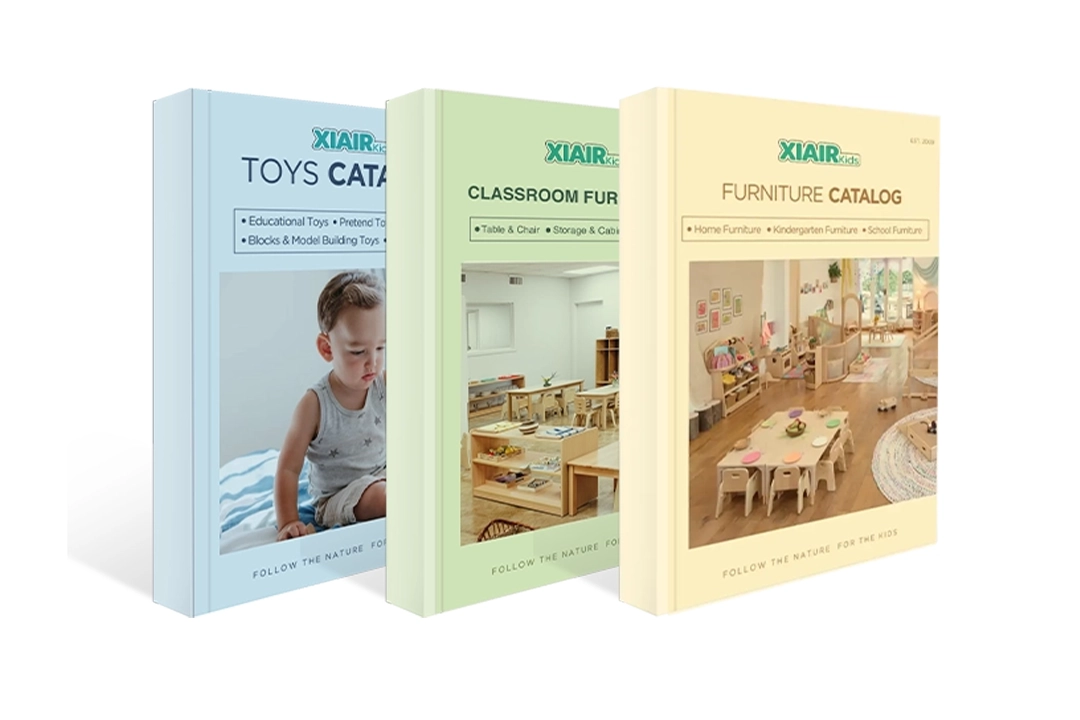Many parents and teachers feel overwhelmed when trying to pick the right preschool activities. With so many choices, it’s hard to know which ones really support children’s growth—and which are just filling time.
You try activity lists, Pinterest ideas, or random crafts—but often they feel disconnected or one-off. Kids might enjoy them briefly but learn little. You end up stressed, and children don’t gain consistent development.
This guide organizes Preschool Activities into meaningful types. You’ll see which kind of activity fits which developmental goal, the best ages to try them, and how to use them effectively. No endless lists—just clear guidance and smart linking to your detailed child-activity pages.
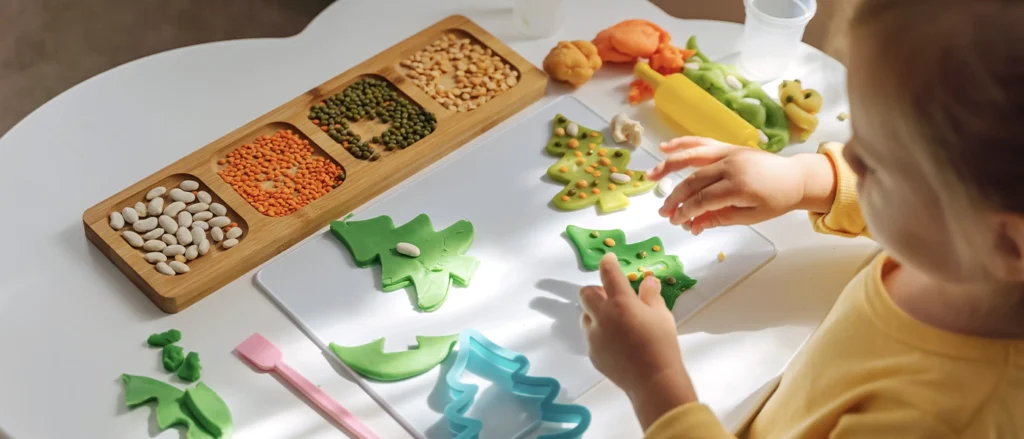
Why Preschool Activities Matter
Preschool activities play a critical role in supporting children’s holistic development. They are not just entertainment—they are opportunities for meaningful learning that shape how children think, move, feel, and relate to the world. Here’s how:
- Développement cognitif
Activities like puzzles, matching games, and simple science experiments help children develop problem-solving, memory, and critical thinking skills. - Language and Literacy Skills
Circle time, storytelling, songs, and role-play activities build vocabulary, listening, comprehension, and early reading abilities. - Fine and Gross Motor Skills
From threading beads to running obstacle courses, activities support physical coordination, muscle strength, and spatial awareness. - Croissance sociale et émotionnelle
Group play and cooperative games teach children to take turns, express emotions, resolve conflicts, and build relationships. - Créativité et imagination
Art, pretend play, and open-ended tasks allow children to express themselves and explore new ideas freely. - Early Math and Science Understanding
Counting games, sorting objects, observing nature, or experimenting with water tables introduce children to foundational STEM concepts. - Indépendance et confiance
When children complete tasks, follow routines, and make choices during activities, they build a sense of autonomy and self-assurance.
In short, a well-rounded preschool activity plan doesn’t just keep children busy—it helps shape future learners, thinkers, and socially capable individuals.
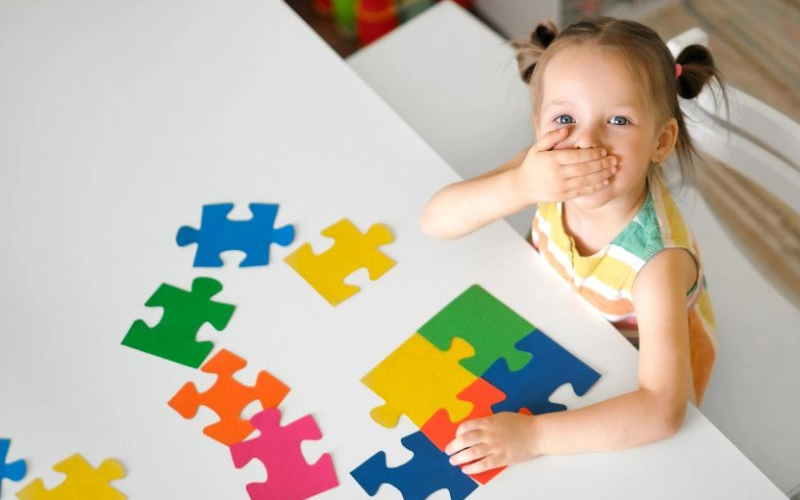
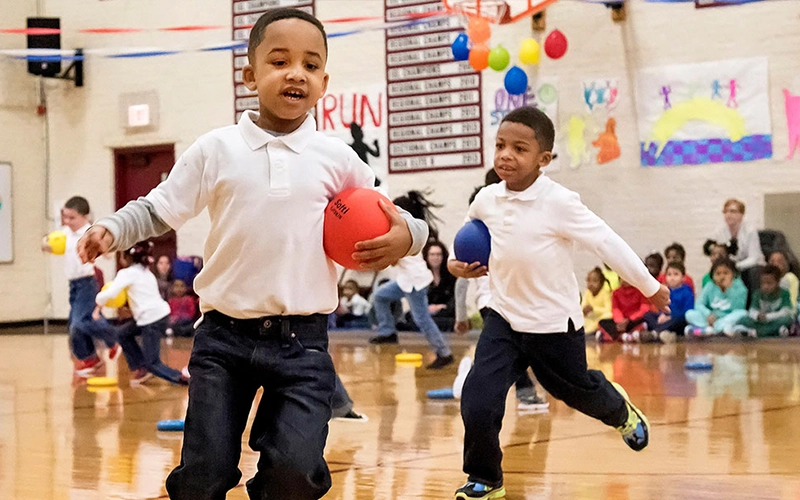
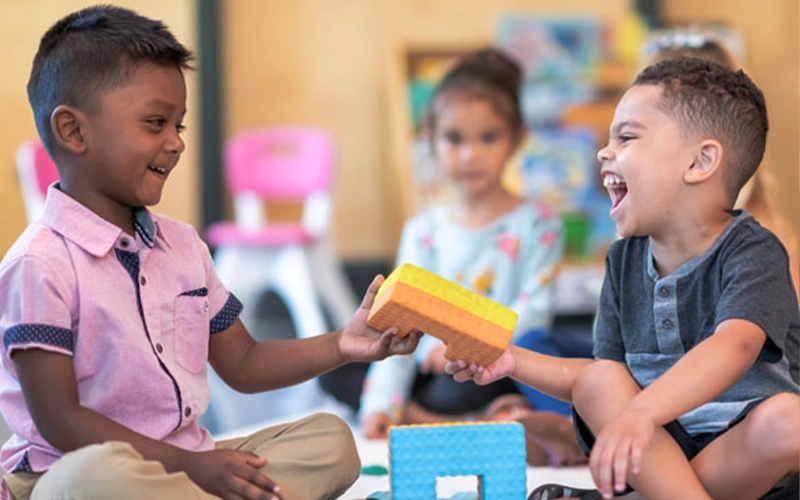
Types of Preschool Activities to Support Every Area of Early Childhood Development
With so many options available, it can be overwhelming to decide which preschool activities are best for your child or students. To make this easier, we’ve categorized the most effective types of preschool activities—each designed to support specific areas of a child’s growth. From motor skills and literacy to social development and creativity, here’s a closer look at the key categories that matter most in early education.
Circle Time Activities for Preschoolers
Recommended Age: 3–5 years
Circle time is one of the most important preschool activities for building routine, structure, and social interaction. It brings children together in a group to sing songs, share stories, talk about the weather, or discuss daily events. These moments may seem simple, but they play a big role in developing listening, turn-taking, and communication skills in preschoolers.
When used consistently as part of a preschool schedule, circle time gives children a sense of predictability. This helps them feel more secure and ready to engage. A short and focused session—around 10 to 15 minutes—is best suited for this age group, as their attention span is still developing.
Instead of closed yes-or-no questions, try using open-ended prompts like “What did you eat for breakfast today?” or “How do you think the sun feels today?” These types of preschool learning activities promote critical thinking and language development. You can also add visual supports like calendar charts, emotion wheels, or themed storybooks to make the experience more engaging.
- Builds attention span and group listening skills
- Encourages turn-taking and respectful conversation
- Strengthens classroom routine and sense of belonging
→ Explore Full Preschool Circle Time Activities →
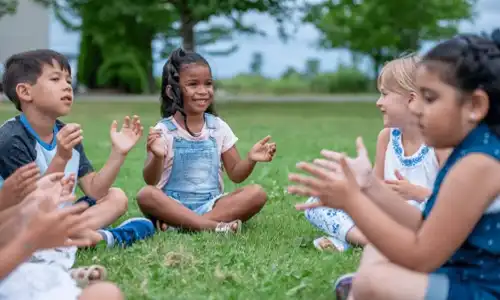

Activités de motricité fine pour les enfants d'âge préscolaire
Recommended Age: 3–6 years
Fine motor activities are essential for helping preschoolers develop control over the small muscles in their hands and fingers. These muscles are necessary for everyday skills like buttoning a shirt, tying shoes, and eventually, writing with a pencil.
Hands-on tasks like threading beads, using tweezers to pick up small objects, or cutting along lines with safety scissors may seem simple, but they lay the foundation for academic success and personal independence. These activities require concentration, coordination, and muscle strength — all built through repeated, engaging practice.
When designing fine motor tasks, keep in mind the balance between challenge and ability. Choose materials that are colorful and interesting to spark engagement — playdough, clothespins, puzzles, and sticker books are great tools to start with. Encourage children to use both hands and try new grips as they explore different movements.
Over time, consistent fine motor practice supports not just physical development, but also patience and persistence. Many preschoolers may initially resist these tasks if they find them difficult, so praise effort over perfection and allow room for progress.
- Builds hand strength and coordination
- Supports pre-writing skills like pencil grip and control
- Encourages independence in daily tasks such as dressing
→ Explore Full Preschool Fine Motor Activities →
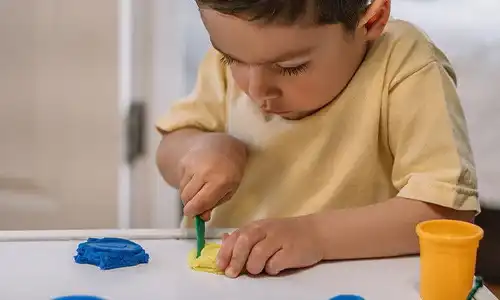
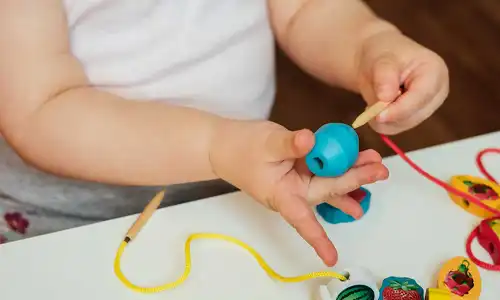
All About Me Activities for Preschoolers
Recommended Age: 3–5 years
“All About Me” activities are some of the most popular preschool activities at the beginning of the year. They help young children explore their identity, build confidence, and connect with classmates. These activities encourage kids to think about who they are—what they like, where they live, who is in their family, and what makes them unique.
This type of preschool learning activity is often used as part of back-to-school lesson plans because it creates a strong emotional foundation for the rest of the year. Children might draw self-portraits, make family collages, or create “Me Books” that show their favorite food, toys, or colors.
Teachers can also incorporate early literacy and fine motor practice by having children trace their names, label their drawings, or present their projects to the class. These simple tasks build not only language and communication skills but also emotional awareness and a sense of belonging in the classroom community.
- Builds self-awareness and confidence
- Encourages social-emotional development
- Supports early language and communication skills
→ Explore Full All About Me Activities for Preschoolers →


Activités mathématiques pour les enfants d'âge préscolaire
Recommended Age: 3–5 years
Math in preschool is much more than counting. Good preschool math activities provide a playful way for children to explore numbers, patterns, spatial relationships, and measurement—laying the foundation for future math learning. These activities should feel like games rather than drills, so children stay engaged while building understanding.
In preschool settings, teachers often set up math centers or learning corners with manipulatives—blocks, counting beads, shape puzzles, and sorting trays. Children might group objects by color or size, compare quantities, or build patterns using colored tiles. These preschool learning activities encourage children to think mathematically: “Which group has more? How many more do we need to make five? What comes next in the pattern?”
To make math meaningful, link it to real-world contexts. For example, during snack time, let children count pieces, divide shares, or compare who has more. When exploring themes—like autumn or farm—use leaves, seeds, or toy animals to count, sort, or compare. Integrating math with themes helps children see that numbers and patterns exist all around them.
As children become more comfortable, you can introduce simple problem-solving questions: “If I take away 2, how many are left?” ou “How many ways can we make 5 using two numbers?” Use visual aids like ten‑frames, number lines, or colored cubes to help them see relationships.
- Introduces fundamental concepts like counting, shape recognition, and pattern logic
- Encourages reasoning and prediction rather than rote counting
- Expands math vocabulary (more, less, same, total, fewer)
→ Explore Full Math Activities for Preschoolers →
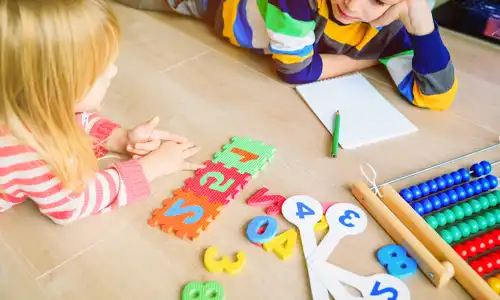
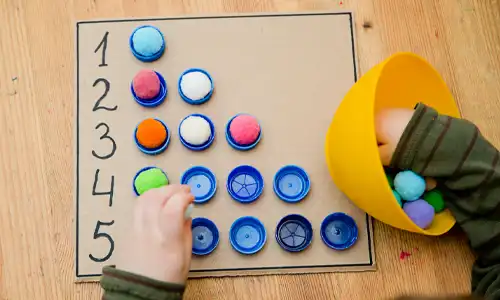
Activités scientifiques pour les enfants d'âge préscolaire
Recommended Age: 3–5 years
Science activities for preschoolers are not about memorizing facts—they’re about curiosity. Preschool science should start from the child’s questions: Why does it float? What’s inside a seed? Where do worms live? The goal is to build observation skills, promote investigation, and encourage children to test ideas in a hands-on way.
Simple experiments like sinking and floating, growing seeds, melting ice, or mixing colors allow preschoolers to explore cause and effect. When you give a child a magnifying glass, a water dropper, or a tray of natural materials, you’re giving them tools to investigate the world. These preschool learning activities foster early critical thinking.
Science is most effective when tied to real experiences. After a nature walk, children can sort leaves, classify insects, or create weather charts. During seasonal changes, they can explore snow, observe shadows, or track daylight hours. Even cooking activities can introduce transformation—what happens to the dough when we bake it?
Adults should model curiosity too: “I wonder what will happen if we leave this outside overnight?” Open-ended questions help children think like little scientists.
- Develops inquiry-based learning and observational skills
- Strengthens vocabulary (evaporation, habitat, texture, predict)
- Builds confidence through hands-on discovery
→ Explore Full Science Activities for Preschoolers →

Activités d'automne pour les enfants d'âge préscolaire
Recommended Age: 3–5 years
Autumn is one of the richest seasons for preschool activities, offering natural, hands-on opportunities to support development across learning areas. Through fall-themed preschool activities, young children engage with sensory materials, explore changes in nature, and build essential early skills.
As leaves change color and the weather cools, nature becomes a living classroom. Leaf activities for preschoolers—such as collecting, sorting, or crafting with leaves—support early math and classification. Children can compare leaf sizes, identify colors, and group by shape or texture, building skills in observation and critical thinking.
Pumpkin and apple activities are ideal for counting, sequencing, and exploring simple science concepts. For example, scooping seeds from a pumpkin strengthens fine motor skills, while comparing weights introduces basic measurement. Fall sensory bins filled with corn kernels, mini pumpkins, or cinnamon sticks offer tactile stimulation and vocabulary development.
Autumn crafts for preschool—like making leaf rubbings, painting pumpkins, or creating fall trees with tissue paper—help improve hand-eye coordination, scissor use, and creativity. Many of these activities also promote social learning, especially in group settings.
Incorporating autumn-themed preschool activities during circle time, story time, and transitions provides consistency and reinforces learning. Singing fall songs, reading books about harvest or hibernation, and engaging in autumn circle time activities strengthen language, memory, and listening skills.
- Connects children to nature and the changing seasons
- Integrates early math, science, and sensory exploration
- Encourages fine motor development through seasonal crafts
- Enhances language and social skills through group activities
→ Explore Full Autumn Activities for Preschool →
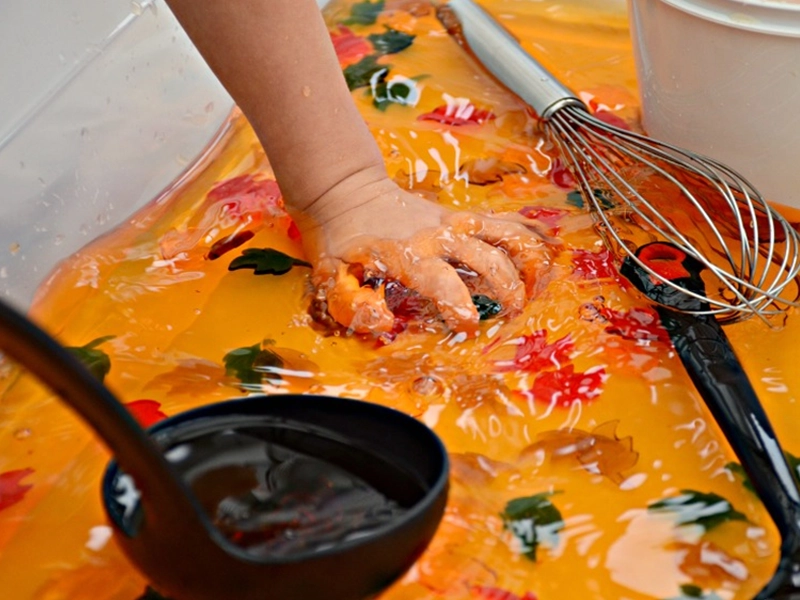
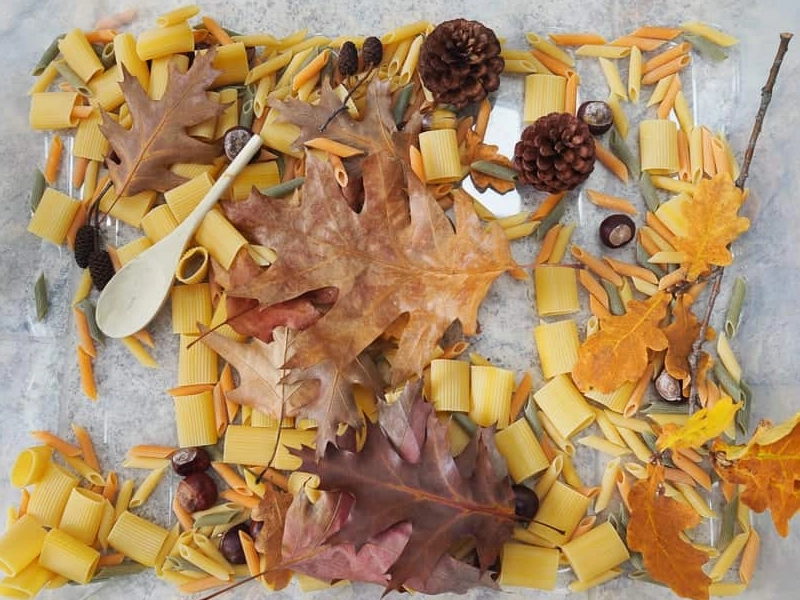
Activités Montessori pour la maternelle
Recommended Age: 4–6 years
Integrating Montessori-inspired preschool activities into the kindergarten years offers a calm, focused environment where children learn through hands-on discovery and independence. These activities are grounded in real-world experiences, encouraging preschoolers to think critically, solve problems, and build self-confidence.
Key areas of focus include practical life activities, such as pouring, buttoning, sweeping, and folding, which improve fine motor skills and coordination. These tasks not only build independence but also lay the foundation for responsibility and attention to detail.
Sensorial activities—like matching textures, exploring sound cylinders, or working with color tablets—enhance sensory awareness and language development. These carefully designed materials help children classify and compare, boosting cognitive growth.
Math activities in a Montessori classroom often include number rods, sandpaper numbers, and bead chains. These tools introduce quantity, sequencing, and place value in a concrete way, supporting number recognition and early operations.
Language development is supported through Montessori language activities, like sandpaper letters and movable alphabets, helping preschoolers connect sounds to symbols in a multisensory manner. Storytelling, journaling, and reading are also encouraged to build literacy.
By encouraging choice, movement, and repetition, kindergarten Montessori activities promote concentration, intrinsic motivation, and love for learning—key traits that support long-term academic and social success.
- Develops independence, focus, and motor control
- Strengthens sensory, cognitive, and language skills
- Uses real materials and structured routines
- Supports child-led learning and practical problem-solving
→ Explore Montessori Activities for Kindergarten →
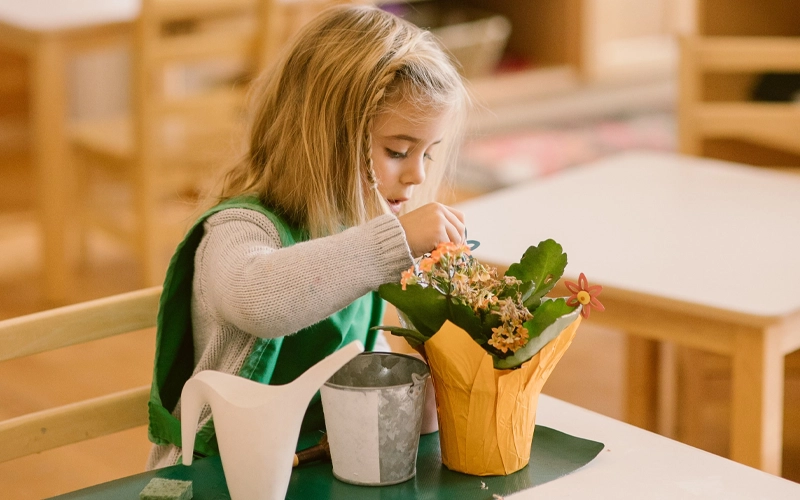
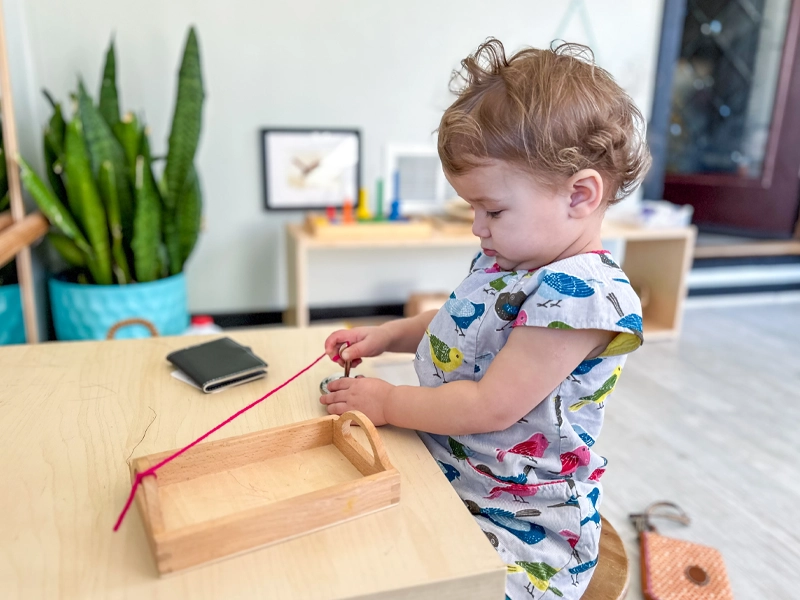
Bricolages préscolaires
Recommended Age: 3–5 years
Preschool craft activities are more than just fun—they play a powerful role in early childhood development. Through simple, hands-on projects like paper collages, handprint art, or recycled materials crafts, children engage their fine motor skills, imagination, and creativity all at once.
Crafting introduces preschoolers to basic concepts like shapes, colors, and textures in a meaningful way. For example, cutting, gluing, tearing, and painting all require concentration and coordination, helping strengthen small muscles in the hands and fingers—key to writing readiness.
These activities also support cognitive development, as children learn to follow multi-step instructions, make decisions, and experiment with cause and effect. Working on shared projects promotes cooperation, turn-taking, and language development, especially when paired with storytelling or discussions about what they’re making.
Importantly, preschool arts and crafts are open-ended—there’s no right or wrong outcome. This gives children the freedom to express themselves, build confidence, and feel pride in their work.
Whether it’s creating seasonal decorations or working with natural materials, crafts help children explore their world in a tactile, joyful way.
- Boosts fine motor skills, concentration, and hand-eye coordination
- Fosters creativity, self-expression, and decision-making
- Introduces basic early learning concepts like colors, shapes, and patterns
- Encourages social interaction and emotional confidence
→ Discover Easy Craft Ideas for Preschool →
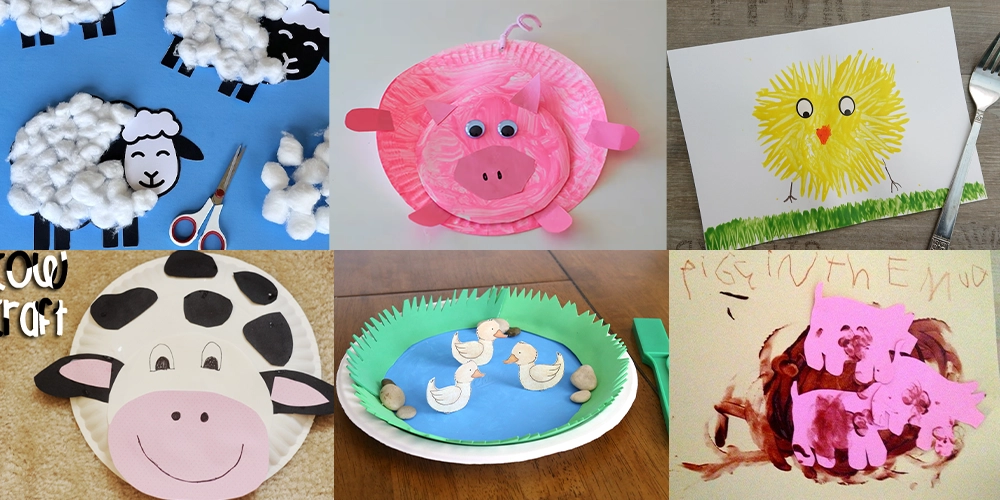
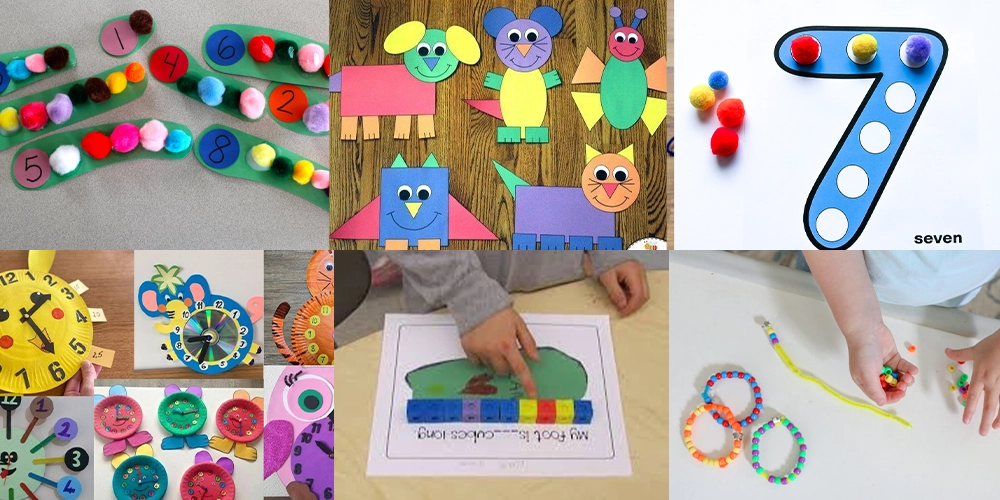
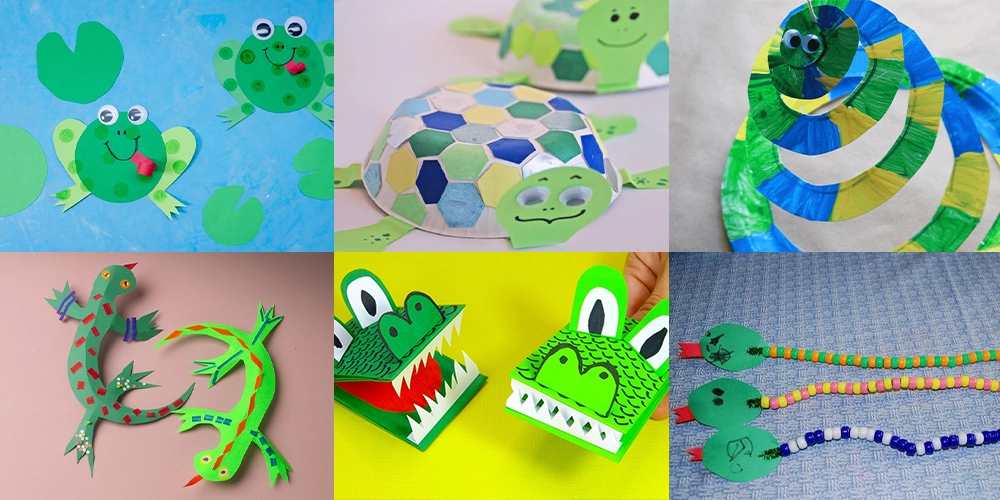
Jeux de récréation en salle
Recommended Age: 3–5 years
When outdoor play isn’t an option, indoor recess games become essential in maintaining preschoolers’ physical activity and focus. These structured, movement-based preschool activities help children release energy, improve coordination, and enhance social-emotional skills—all within the classroom setting.
Games like “Freeze Dance,” “Simon Says,” or “Follow the Leader” not only keep children active but also reinforce important listening skills and self-regulation. Even simple obstacle courses made with classroom furniture or yoga sessions on the rug can promote gross motor development and spatial awareness.
These activities are especially valuable for promoting cooperative play and managing transitions between more academic or seated tasks. They help reduce restlessness and improve classroom behavior, making learning times more productive.
For teachers and parents, having a go-to list of indoor games for preschoolers ensures there’s always a backup plan for rainy days or high-energy moments.
- Maintains physical activity when outdoor play isn’t possible
- Builds gross motor skills and balance
- Encourages listening, following directions, and group participation
- Helps manage transitions and reduce classroom restlessness
→ Try These Simple Indoor Movement Games →
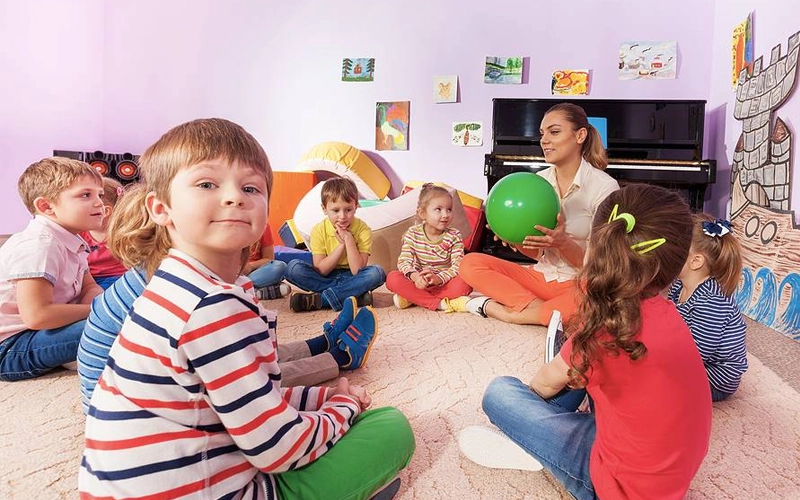
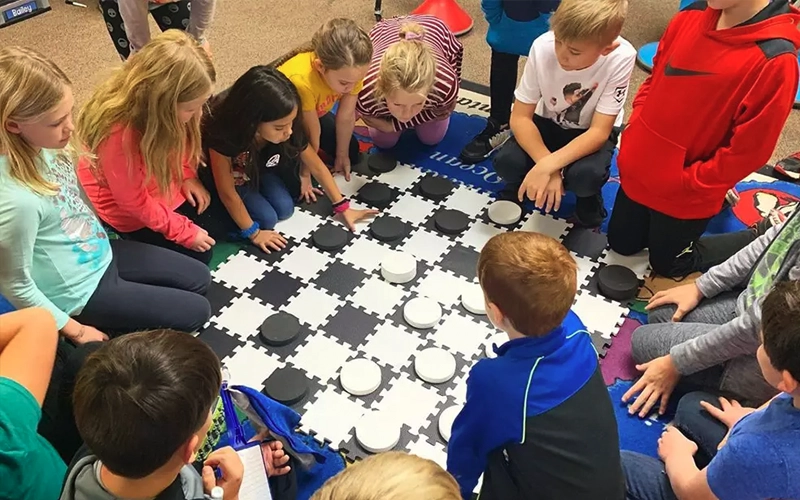
Comprehensive Overview of Preschool Activities
| Type d'activité | Suggested Age | Focus sur le développement | Key Skills Supported | Why Structured Use Matters |
|---|---|---|---|---|
| Activités de l'heure du cercle | 3–5 years | Social & Emotional | Listening, turn-taking, participation | Builds group belonging and daily routine consistency |
| Activités de motricité fine | 3–5 years | Physical (Fine Motor) | Pencil grip, cutting, threading | Prepares children for writing and self-help tasks |
| All About Me Activities | 3–4 ans | Self-Awareness & Social Skills | Identity, empathy, self-expression | Helps children feel seen, known, and valued |
| Activités mathématiques | 3–5 years | Cognitive | Counting, number sense, sorting | Supports early numeracy and logic development |
| Activités scientifiques | 4–5 ans | Inquiry & Observation | Cause-effect, questioning, sensory exploration | Fosters curiosity and independent thinking |
| Autumn Activities | 3–5 years | Seasonal Learning | Nature awareness, creativity | Connects children with environment and seasonal changes |
| Montessori Activities | 3–6 years | Independence & Focus | Practical life, concentration, problem-solving | Encourages self-directed learning and personal responsibility |
| Bricolages préscolaires | 3–5 years | Creativity & Fine Motor | Cutting, gluing, color recognition | Develops fine motor skills and artistic confidence |
| Jeux de récréation en salle | 3–5 years | Gross Motor & Social Skills | Coordination, balance, teamwork | Cause-and-effect, questioning, sensory exploration |
Tips for Planning Preschool Activities
Planning preschool activities is more than just filling time — it’s about creating meaningful learning experiences that match the developmental needs of young children. Here’s how to plan with purpose:
1. Align Activities with Developmental Goals
Each preschool activity should support at least one area of development: motor skills, early literacy, social-emotional growth, or cognitive thinking. For example, sensory bins can enhance fine motor skills and language development, while group games help build cooperation and listening.
2. Consider the Age and Attention Span
Tailor activities to your children’s age group. Toddlers (2–3 years) need short, simple tasks with lots of movement, while older preschoolers (4–5 years) can handle multi-step activities, basic group discussions, or guided crafts.
3. Use a Balanced Weekly Plan
Include a mix of:
- Art and craft activities
- Jeux en plein air
- Music and movement
- Sensory activities
- Preschool math and literacy games
- Thematic units (e.g., autumn, community helpers, animals)
Balance quiet and active tasks, indoor and outdoor sessions, and individual vs. group work.
4. Follow a Predictable but Flexible Routine
Young children thrive on structure. Keep consistent blocks for learning centers, circle time, and outdoor play. But also allow room to adapt — sometimes an unplanned nature walk or child-led craft can offer the best learning moments.
5. Choose Seasonal or Theme-Based Preschool Activities
Thematic units like autumn activities, winter crafts, or farm week make learning more relevant and fun. They naturally introduce new vocabulary, real-world connections, and integrated subjects (science, literacy, art).
6. Plan for Transitions and Indoor Recess
Don’t overlook times like indoor recess, arrival, or transitions between activities. These are perfect moments for quick games, music, or simple table activities to keep children engaged.
7. Prepare Materials Ahead of Time
Keep all supplies sorted and accessible. Laminate activity cards, label bins, and rotate toys or stations weekly to keep interest high. Well-prepared preschool activities run more smoothly and allow you to focus on the children.
8. Observe and Adjust
Watch how children respond to different activities. If something consistently doesn’t work, change it. Preschool activity planning is a living process — stay flexible and child-centered.
FAQ
What are the best types of preschool activities for different ages?
The best preschool activities depend on the child’s age and stage. Younger preschoolers (ages 2–3) benefit from sensory play and simple motor tasks, while older children (ages 4–5) may be ready for early math, group games, and structured art projects. Choose activities that match attention span and skill level.
How can I create a balanced daily schedule using preschool activities?
A balanced schedule includes a mix of fine motor, gross motor, cognitive, sensory, and social activities. Start with morning circle time, add center-based play (art, math, literacy), include outdoor movement, and wrap up with calm activities. Rotate activities weekly to maintain interest.
How do preschool activities support child development?
Preschool activities foster cognitive, physical, emotional, and social growth. For example, sorting games support problem-solving, dramatic play builds communication skills, and crafts improve coordination. Repetitive, hands-on activities lay the foundation for future academic success.
How often should I rotate preschool activities?
To keep children engaged, rotate preschool activities weekly or bi-weekly. Refresh themes, materials, and challenge levels while keeping some familiar options for comfort. Seasonal activities and holidays also provide great natural transitions.
Can I use preschool activities at home without a classroom setup?
Absolutely. Most preschool activities require minimal materials and can be adapted for small spaces. Use kitchen items for sorting, read picture books for literacy, and turn everyday routines like cooking or cleaning into learning moments.
What should I do if a child loses interest in preschool activities?
If a child is disengaged, shorten the activity, simplify the task, or change the format. Some children need more movement or hands-on elements. Follow their curiosity and be ready to pivot — flexibility is key in preschool activity planning.
How can I plan preschool activities with limited resources?
You don’t need fancy materials. Use recycled items, nature finds, or household objects. For example, bottle caps for counting, leaves for art, and cardboard boxes for building. Simple, low-cost preschool activities can be just as effective and engaging.
Are preschool activities different from play?
Preschool activities often include structured goals or learning outcomes, whereas play is more open-ended. However, the best preschool activities blend the two — they feel like play but are designed to support skill-building and development.



